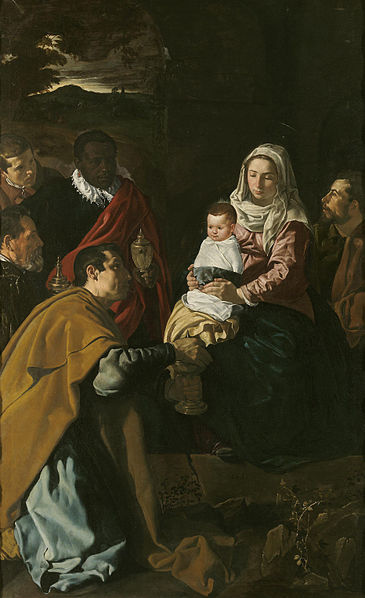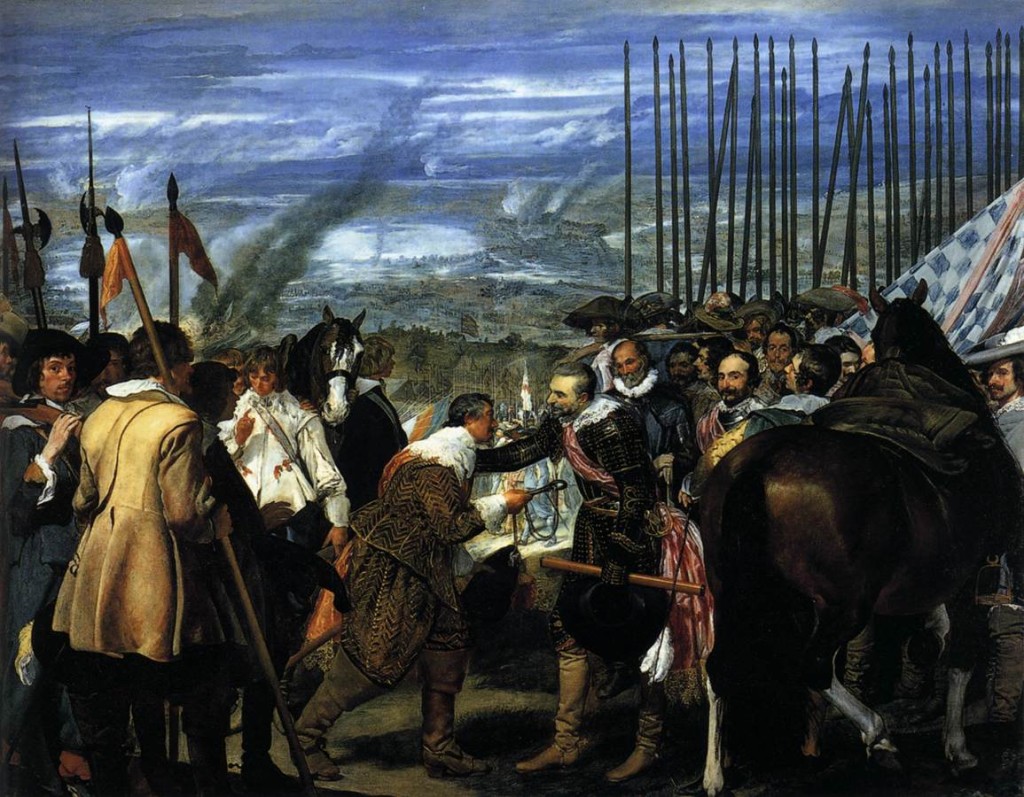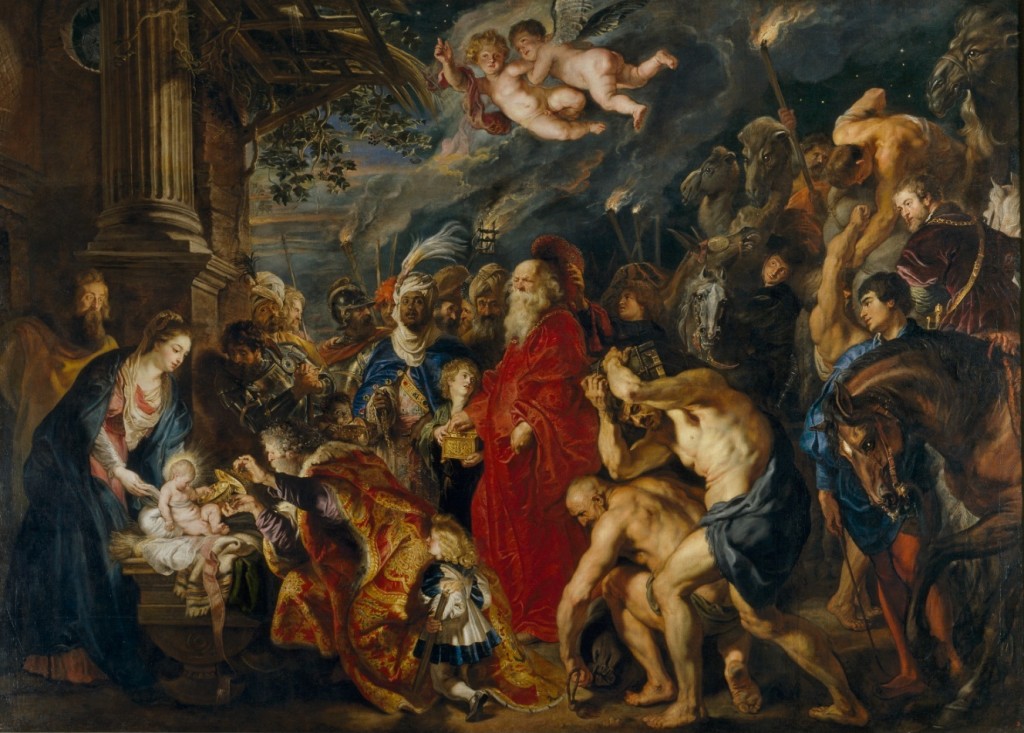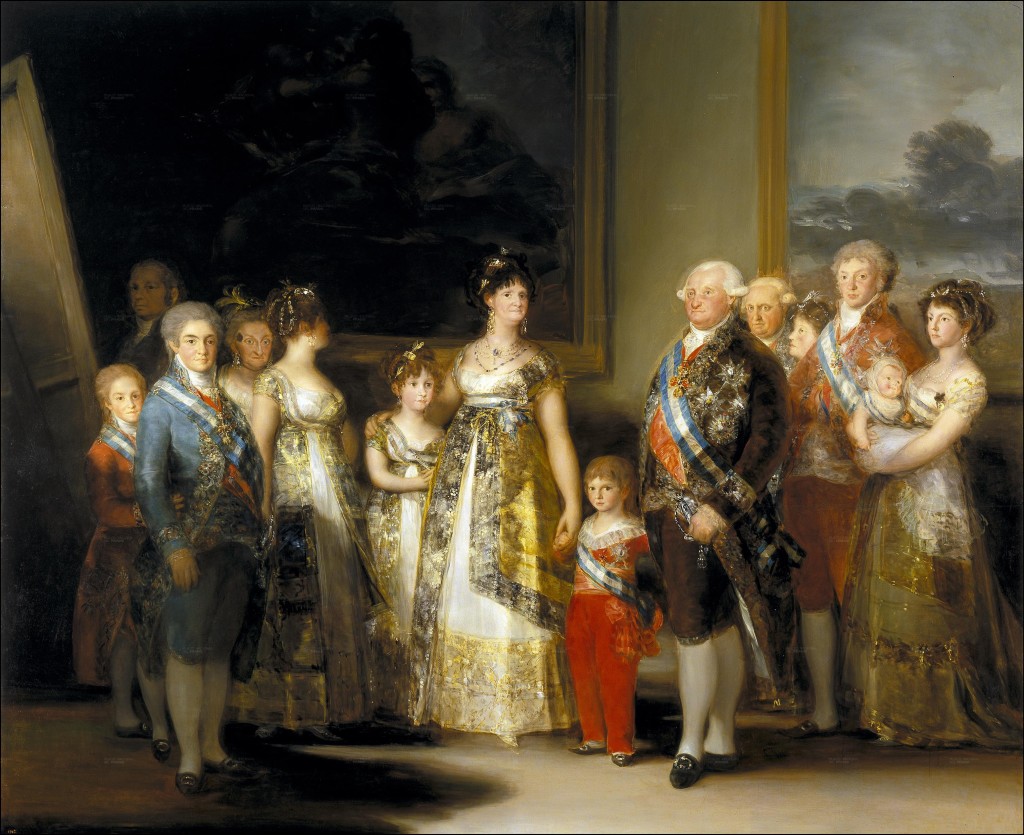Spanish painting. All the qualities are found in one form or another: the extravagance, the earthiness, the harshness, the illusion and disillusion, the gay and grotesque. The themes are God and Man, nature getting a bare look in. And of course, religious painting faithfully expresses the national temperament, that is to say, more inspired by the Crucifixion, the Virgin weeping below the cross, the martyrdom of saints, skulls, flagellations and the torments of hell than by the Joyful mysteries…
So, then, it is the human rather than the divine side of Christ’s nature and life that the Spanish painter is drawn to, and those artists who excel in the human sphere appear to do so in the religious. It may be a quirk of taste, but the religious works of Velazquez and Zurbaran, even of Goya, are more moving than those of El Greco or Murillo, perhaps by their down to earth quality.

Velazquez. Adoration of the Magi. 1619. WIKI
If we focus on the details of La Adoracion de los Reyes, we see a Virgin with a dull peasant face holding a Child who looks all too sharp and knowing, a future cacique you might think, while He receives the homage of three clodhoppers. If you stand a little way off, the picture exudes reverence, tranquility, and love, all through a simple but magic use of light and shade. Beside the matter-of-fact presentations of Velazquez, the “spirituality” of an El Greco subject with the same anemic face, the upturned eyes, and the spiky mole’s hands seems trite.

—During the 1630s and 1640s Velázquez occasionally painted religious and mythological works, but they are all eclipsed by his great masterpiece of contemporary history painting, The Surrender of Breda (Prado, 1634-35), one of a series of twelve paintings by various court artists glorifying the military triumphs of Philip’s reign that were executed for the new Buen Retiro Palace in Madrid. The composition is highly organized, but Velázquez creates a remarkable sense of actuality and no earlier picture of a contemporary historical event had seemed so convincing. Characteristically, he concentrates on the human drama of the situation, as Ambrogio Spinola, the chivalrous Spanish commander receives the key of the town from Justin of Nassau, his Dutch counterpart, with a superb gesture of magnanimity. —click image for source…
To the portrayal of human beings the great Spanish artists bring all the raciness and observation and irony that pervade Spanish literature. Truth comes first, without regard to power or place, let alone to compassion or chivalry. What court painter but a Spanish one would risk showing his king as a red-faced bumpkin and his queen as the very pattern of misguided vanity, with sparkling button eyes, a flat nose, and thin lips compressed to hide the missing teeth?
Such indeed were that catastrophic pair, Carlos IV and Maria Luisa, by all contemporary accounts, and it seems not to have occurred to Goya to depict them in any other way. Nor, for that matter, do we hear that they were anything but delighted with his performance.










 COMMENTS
COMMENTS



